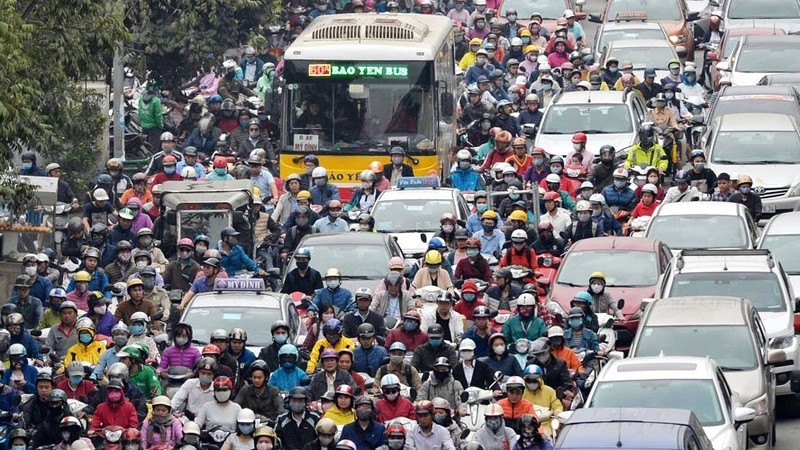The growth rate of all kinds of vehicles is very high, of which individual cars have risen by 16.15% per year and motorbikes by 7.66% per year.
The high volume of vehicles has not only caused environmental pollution but also increasingly serious traffic congestion, which requires drastic measures from Hanoi’s authorities. The capital city has proposed the two projects, including ‘zoning of motorbikes in accordance with the infrastructure and service capacity of the public passenger transport system, towards stopping operation of motorbikes in the city’s districts by 2030’ and ‘collecting fees for vehicles in several areas at risk of traffic congestion and environmental pollution in the city to limit the number of motor vehicles entering the central districts’. They have been considered as synchronous measures aiming to reduce traffic jams and environmental pollution.
In the current traffic situation, numerous experts, scientists and people have paid great attention to the two projects. However, it is crucial to considered carefully the timing and methods to implement the projects effectively. In addition to the transport, other sectors, including construction, education and communications, should join hands to solve issues in the context of buildings and apartments being built continuously while schools, hospitals and factories are still located in the inner city. Moreover, the planning of houses, construction, public and personal vehicles is not synchronous.
Therefore, relevant agencies need to set urgent solutions to limit vehicles and collect fees for cars entering the urban areas. In order to reduce personal vehicles, it is necessary to increase the efficiency of public transport to meet travel demands of people. Many experts said that the ban or restriction of private vehicles should be applied in several areas with high urbanisation rates, not in a large area. Hanoi has initially succeeded in banning private vehicles in streets around Hoan Kiem Lake at the weekend, proceeding to other ancient streets as bus routes are launched to connect car parks.
In addition to development of traffic structures and public passenger transport, Hanoi should resolutely revoke areas of agencies and offices in the relocation for public works, such as lakes, parks and green trees as well as withdraw abandoned projects to build car parks. The city’s authorities should definitely allow the construction of buildings if transport infrastructures, such as sidewalks, parking lots, garages, and other services, are ensured. Meanwhile, it is essential to set a reasonable roadmap to gradually reduce, control and grant registrations for new car and motorbikes.
The city should adjust, build and connect urban areas and develop sub-regions in a synchronised manner with the satellite towns, towards the goal of sustainable development. Accordingly, the objectives for the quality of life need to be emphasised such as capacity of public transport; control of air pollution, particularly from emissions of cars and motorbikes; density of trees per capita; and control of noise pollution.
On the basis of modern, scientific and proper management of urban areas, the problem of traffic congestion will be solved radically and sustainably.
















